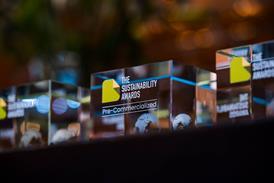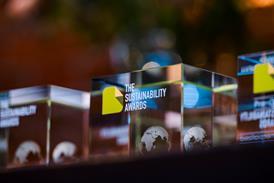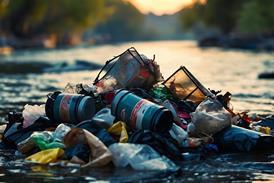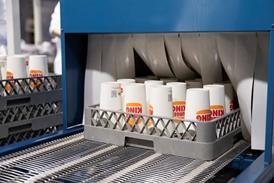
The PPWR is clearly presenting EU packaging businesses with plenty of challenges – but why don’t we talk more about the potential upsides? In this article, Anna Perlina, sustainable packaging consultant at Integrity Solutions, explains how new EU regulations can be used to grow your packaging business.
The EU Packaging and Packaging Waste Regulations (PPWR) call for a significant shift towards more sustainable packaging options and operating models.
By establishing mandatory requirements for packaging design and waste management, the PPWR not only aims to set a common framework to reduce the environmental impact of packaging placed in EU markets but also creates new business opportunities and raises the need for new packaging approaches and packaging-related services.
The market demands innovative, circular, and economically viable solutions across the packaging value chain, helping participants to effectively comply with the PPWR.
Businesses that can quickly adapt to these new regulations and respond to new market challenges will find themselves at an advantage and well-positioned for growth.
Following the direction of packaging regulations, we can outline several key areas where current and new types of businesses have opportunities for growth and can be attractive to investors:
1. Packaging design, development, and manufacturing
The PPWR introduces standards for packaging design, including fit-for-functionality, recyclability, reusability, and the incorporation of recycled content in plastics. This shift presents an opportunity for packaging suppliers specializing in the design, development, and manufacturing of compliant packaging solutions.
Companies that innovate in packaging materials, concepts, and processes, achieving certifications that verify packaging compliance and offering scalability to their customers will position themselves as go-to leaders in the packaging market.
2. Recycling and waste management services
With the goal of significantly improving recycling rates and enhancing separate collection of packaging waste across various materials, PPWR paves the way for increased investments in waste management infrastructure.
Businesses that can provide effective sorting, economically viable recycling, and waste management services will be in high demand. This includes the development of advanced sorting technologies and efficient collection systems tailored to ensure the quality and purity of post-consumer recyclates, particularly for food contact and other sensitive applications.
3. Reusable packaging and reuse operating models
The promotion of reusable packaging and the requirement for established reuse systems under the PPWR create a unique niche for businesses offering innovative reusable solutions.
Companies capable of designing, implementing, and managing these systems from start to finish on behalf of packaged goods companies will tap into a growing market focused on reducing single-use packaging. Those who solve the challenge of consumer buy-in by providing a seamless experience during the usage and return phases will lead the way.
4. Refill stations and refill services
The introduction of refill stations and associated services will be mandatory for larger supermarkets and retailers, representing a transformative opportunity for refill system providers that can effectively engage consumers—currently one of the biggest barriers.
Developing refill solutions that offer convenience and provoke positive changes in purchasing behaviors will help cultivate a community of environmentally conscious consumers, driving sustainable consumption patterns and leading to refill segment growth.
5. Packaging waste prevention and minimization
PPWR sets ambitious targets for reducing packaging waste, creating a demand for innovative solutions that minimize material usage without compromising product integrity and consumer safety.
Suppliers, particularly those focusing on lightweighting materials and technologies as well as the optimization of packaging concepts, will find opportunities to cater to customers who seek to reduce their environmental footprint, communicate their efforts, and pay lower extended producer responsibility (EPR) fees thanks to generating less packaging waste.
6. Packaging testing, certification, and conformity assessment
With conformity assessments and certifications required to demonstrate compliance with the PPWR, there is a growing need for service providers that specialize in packaging testing and verification services.
Companies offering life cycle assessments, recyclability analyses, and authorized certification labels will experience increased demand as businesses seek to verify and communicate their more sustainable packaging choices.
Service providers that can offer a comprehensive range of services—from large-scale assessments of overall packaging portfolios down to SKU level to clear instructions and steps leading to guaranteed certifications will stand out. Currently, this area represents a significant challenge and requires considerable effort for potential customers to navigate.
7. Digital solutions for packaging management
Beyond the outlined areas, integrating digital technologies into packaging management offers additional growth opportunities. Businesses that provide software solutions for optimizing packaging, tracking it throughout its life cycle, consolidating data for reporting across the value chain, conducting environmental assessments, and improving supply chain visibility will find themselves in an advantageous position.
Key success factors include the ability to manage complexity, offer efficient data inputs, ensure data source reliability, and facilitate compatibility and data exchange across different data management systems.
The future of the packaging industry lies in adaptability, technology, creativity, innovation, and a genuine commitment to sustainability. Those who seize these opportunities will grow their businesses in the years to come.
Did I miss any other business opportunities? I am sure there are even more, as many packaging puzzles still remain unsolved.
If you liked this story, you might also enjoy:
Reuse vs. single use – which is better for the environment?
Sustainable Innovation Report 2025: Current trends and future priorities
What can the world learn from South Korea’s world-leading performance in plastics circularity?


















No comments yet